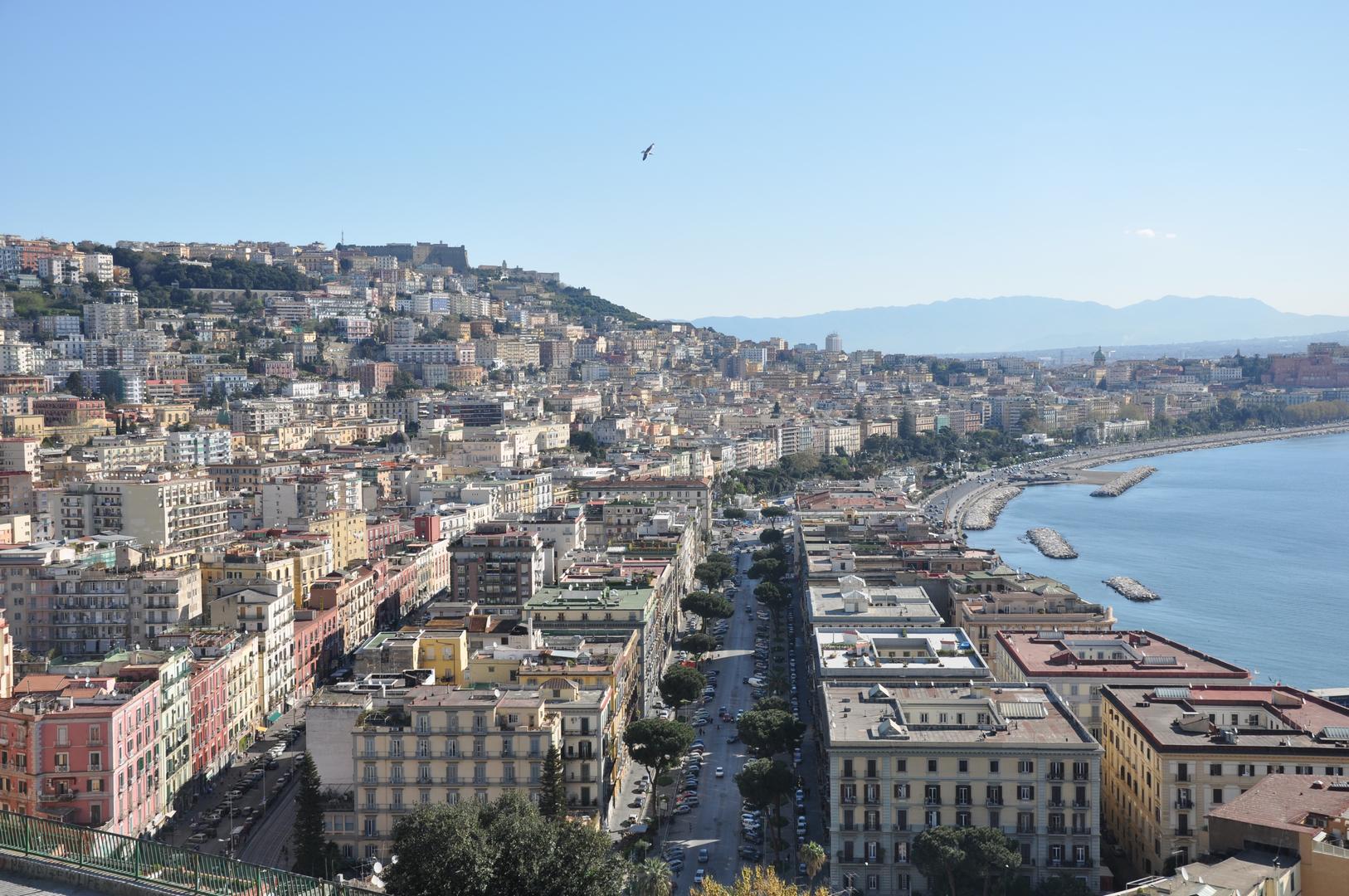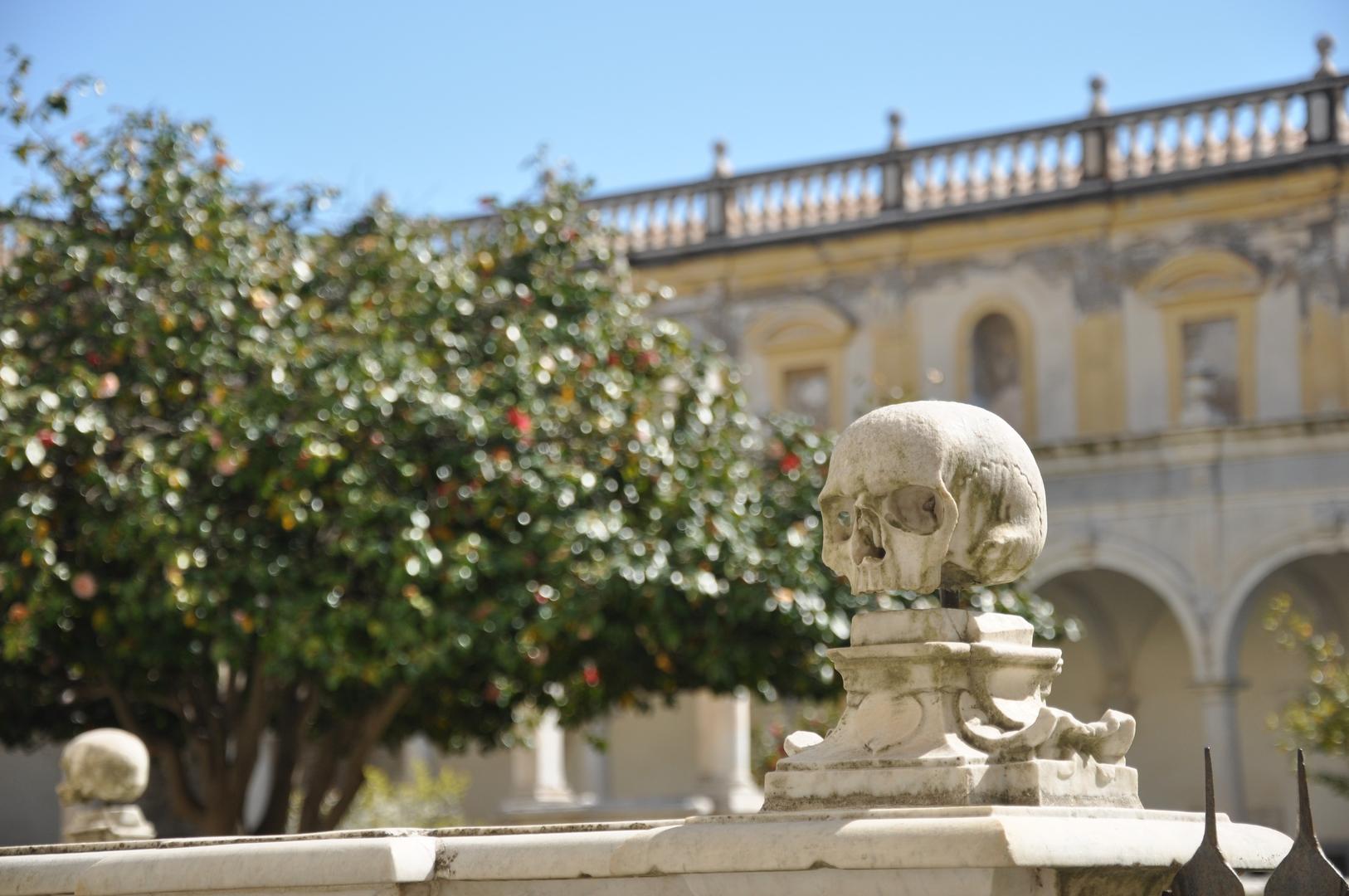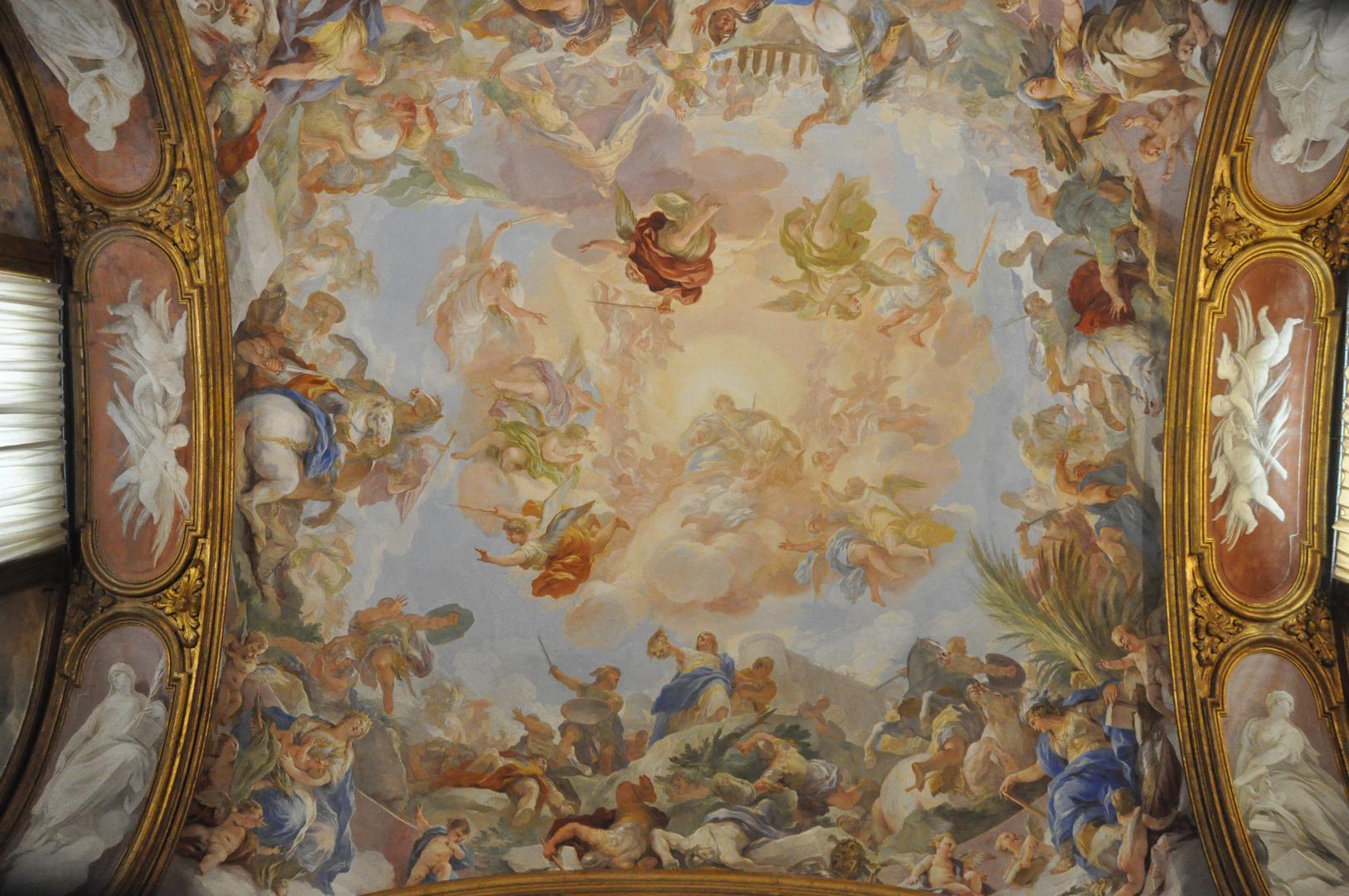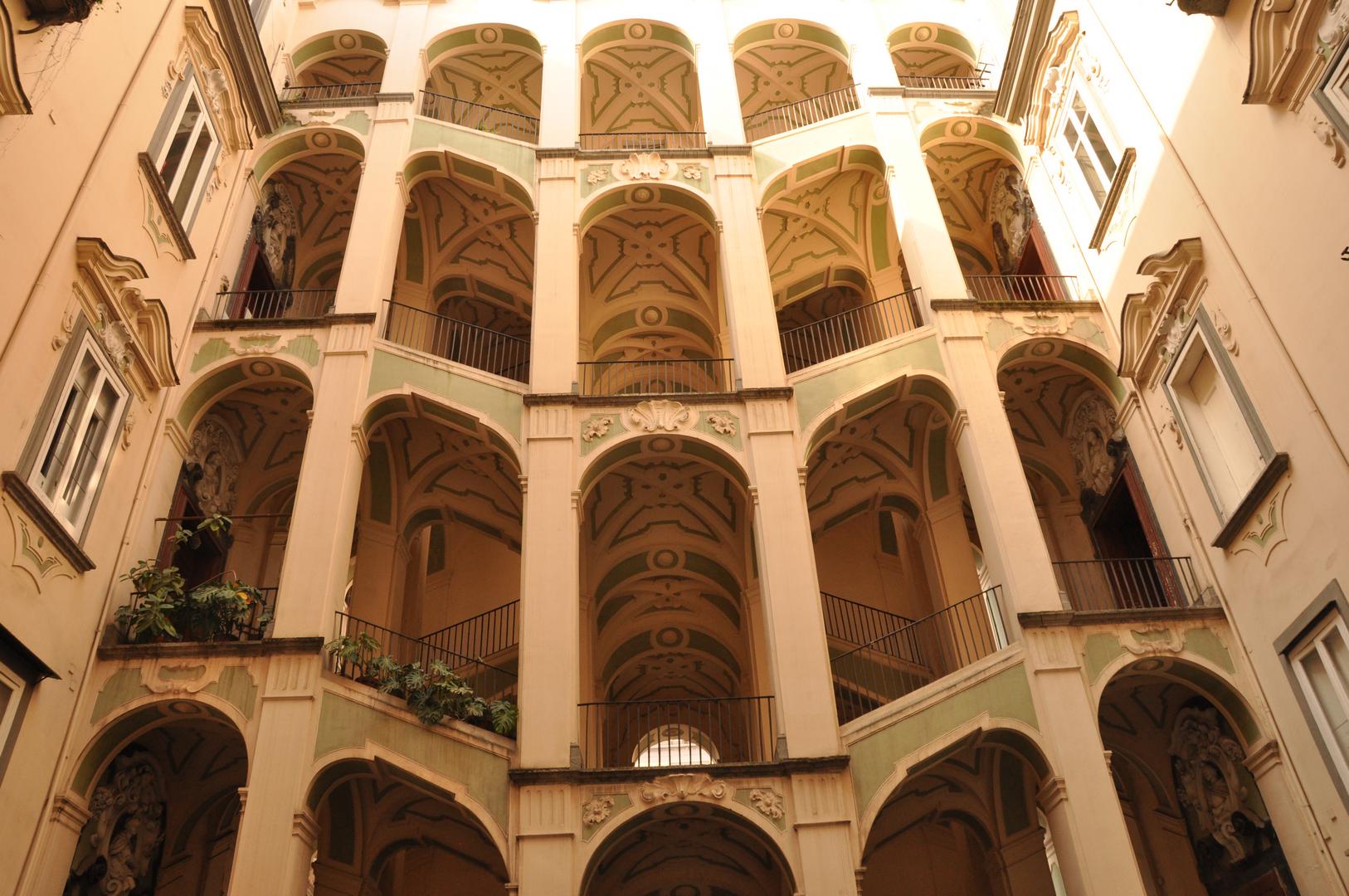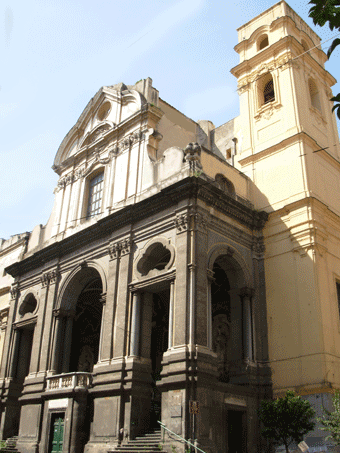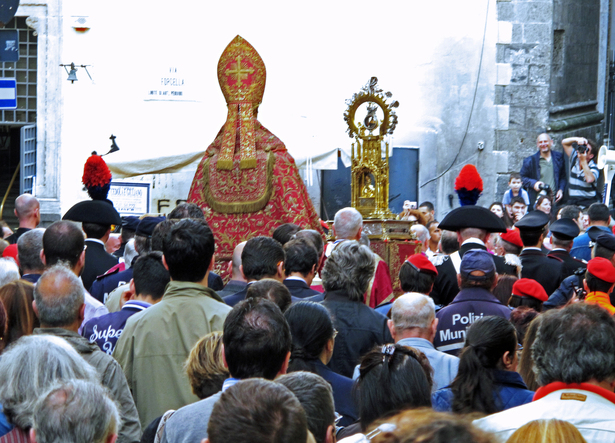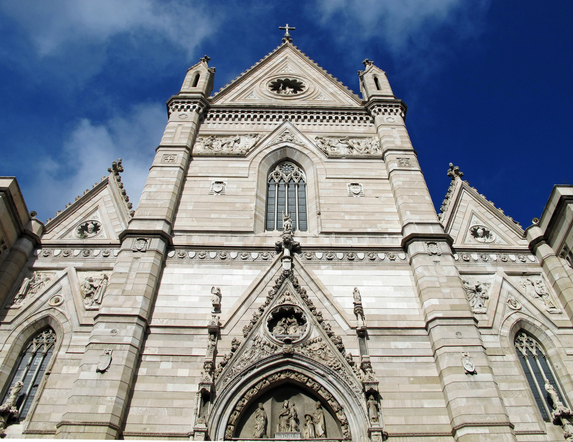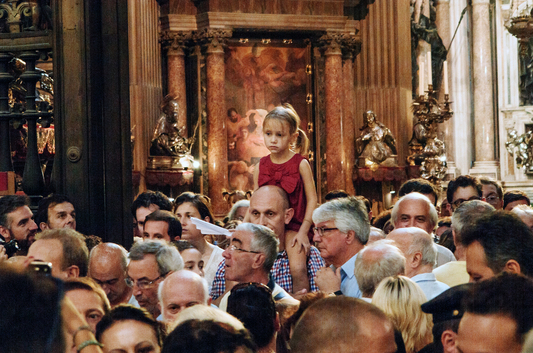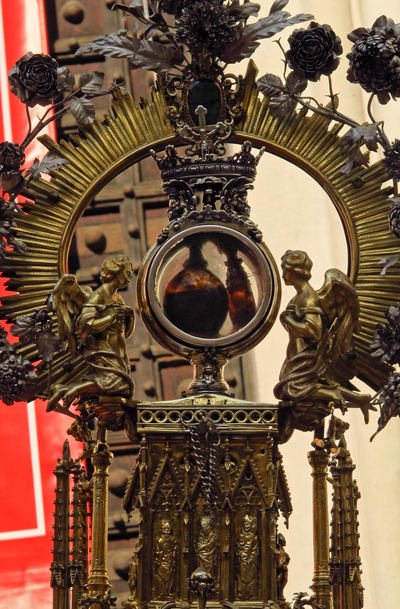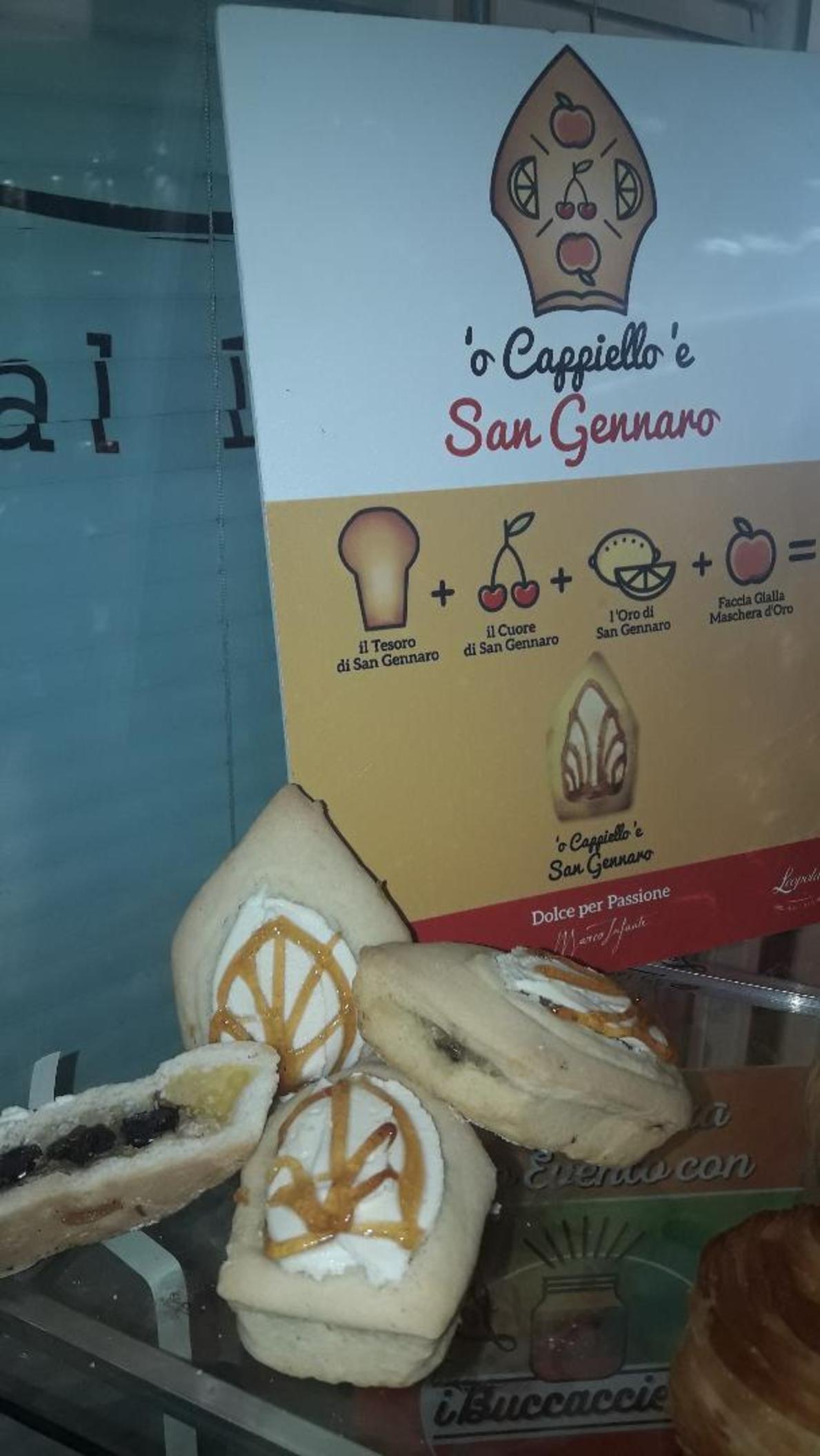Alice: It’s March 19th which means it’s Father’s Day in Italy as well as the Festa di San Giuseppe or Saint Joseph’s day which also means…zeppole!
In a different time I would probably be heading down the sunny streets of Naples to Bar Primavera or Leopoldo to get that fresh pastry topped with custard cream and a candied black cherry. I prefer fried but baked is also tasty if you want something a bit lighter-everyone has their preference. Every March 19th you’ll see people walking around with nicely-wrapped trays of these balls of goodness which might be bite-sized or large enough to share with friends and family.
Fiorella: and do not forget the zeppole al forno (baked) made by Attanasio or Mignone. In these days pasticcerie are closed and I can only dream about them. I can almost smell and taste these celestial pastries while doing a virtual walk to a Church dedicated to St Joseph.
The church of San Giuseppe dei Ruffi at the crossing of via Duomo with our beloved via Anticaglia, was originally founded by some noblewomen, amongst them members of the Ruffo family.
Starting from 1669, the construction of a new church and a convent were run under the architect Dionisio Lazzari. However, because of a dispute with the nuns of the nearby convent of Donnaregina, the project was stopped to restart much later.
It was only in 1682 that Dioniso Lazzari was able to complete the nave and the main altar, thus giving the nuns the use of the church.
Arcangelo Guglielmelli, helped by his son Marcello, continued the project as we can see in the scenografic vestibule frescoed with his typical illusionistic spacial decorations.
Guglielmelli’s eclectic solutions were also adopted for the cloister of the nuns. Part of the cloister was later demolished in the 19th century to enlarge Via Duomo.
At the death of Guglielmelli in 1723, Nicola Tagliacozzi Canale-architect, engineer and scenographer-continued the work.
Amongst the splendid pieces visible in the church, we can perhaps just point out the intricate marble decorating the main altar and the side chapels. They are all fabulous examples of late-Baroque Neapolitan commesso marmoreo. From Latin committere, the joining together of inlaid marble, mother of pearl and pietre dure.
Matteo Bottigliero (who also worked at the Guglia dell’Immacolata, the monumental spire in piazza del Gesù), Giovan Domenico Vinaccia (famous for the silver altar in the Chapel of St. Gennaro in the Cathedral), Bartolomeo and Pietro Ghetti and possibly the talented Giuseppe Sanmartino (author of the Veiled Christ in the Sansevero Chapel) are only some of the scupltures decorating San Giuseppe dei Ruffi with pomp and splendour.
Pomarancio, Luca Giordano and other painters completed the sumptuous ornamentation.
The cupola was frescoed by Francesco de Mura in 1741 with the Glory of St Joseph. Joseph is the righteous man and father for the Christians, from where the celebration of Father’s day on March 19th.
Talking about St Joseph, I cannot ignore his constant presence in the fabulous windows of one of my favourite Nativity scene shops.

San Giuseppe by La Scarabattola
Neapolitan Nativity and pastori (shepperds) are well known world-wide and decorate Naples historical centre all year round. The Scarabattola atelier is one of the best places to admire the art that started in Naples in the 18th century and spread all over Europe and the world. Did you know that the Christmas tree at the MET in NYC is decorated with Neapolitan 18th century angels?
Charming Lello and his brothers and sisters–the Scuotto’s-follow the noble tradition by always introducing in their fabulous creations a perfect fusion with Naples’ history, legends and daily life.
Alice: Oh, our city, so lavish with art and so rich with culture! I wish I could be there to walk through the church of San Giuseppe dei Ruffi and taste one of the pastries from Mignone which are only available in this period. However, I’m still celebrating the greatness of Naples from afar, even if I can’t be there right now.
Though I usually buy zeppole in the local pastry shops near my house, I’ve eaten homemade zeppole di San Giuseppe which are delicious. Today I will take on the task of creating one of my favourite deserts from Naples because I cannot buy them at the store. I hate to disappoint my Neapolitan friends, but I’m currently in England where a lot of the stores are out of eggs and flour so I’ll have to get creative with the mixture. I’ve had help from my friend’s mom so I at least get the process right. It’s been a great, virtual experiment to keep the fabulous Neapolitan traditions going even during this time where we are separated.
Here is the recipe, straight from Marco’s mom:
3 eggs
½ litre of milk
3 tablespoons of sugar
3 tablespoons of flour
Lemon zest or 1 tsp vanilla
Put the milk in a small saucepan on medium with two lemon zests or vanilla.
In a bowl mix the eggs, sugar and flour together.
When the milk is very hot but not boiling, put two ladles full of the milk in the egg mixture and stir together. After that, combine everything in the bowl with the milke in the saucepan until it has the consistency of a custard cream. Let cool.
1 cup of water
½ cup of butter
A pinch of salt
1 cup of flour
4 eggs
Put one cup of water, the butter and salt in a pot and bring it to a boil. Once the butter is melted, take the mixture off of the stove and add the flour. Put the pot back on the burner on low and keep stirring until everything is well-mixed. Let cool.
Once the mixture has cooled, mix the batter with your fingers and add the eggs one at a time with a wooden spoon. After the eggs are added you can either blend the batter with an electric mixer or by hand until the batter forms peaks.
Using a piping bag, make a tight wreath or small puff on greased parchment paper. Make sure there is a small hole in the centre.
You can either bake for 30 minutes at 400 degrees Fahrenheit or fry on medium heat in abundant canola or vegetable oil. If you choose to fry, Marco’s mom say you’ll need two pots, one small and the other medium-sized. First, place the zeppola puff in the small pot and cook on each side. It will get bigger so you’ll need to finish cooking it in the bigger pot. Once it is nice and golden, you can take it out of the oil and place on paper towels for it to dry and cool.
Once cool, dip both sides of the pastry in sugar, fill the little hole with the custard cream (using a piping bag) and add the black cherry.
Buon San Giuseppe!
